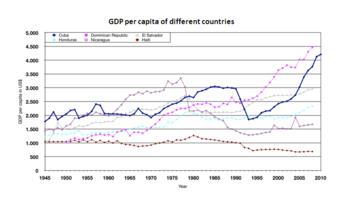The Us Sugar Program And The Cuban Revolution
962 Words 4 Pages The Cuban Revolution, which began in the early 1950’s, was an overthrow of a very corrupt government. It was an attempt to improve the conditions of the Cuban people, but the path was covered in blood and sweat and an informed historian has to ask, was it really worth it? Speech Therapy Progress Report Template. How much actually changed? The main causes of the revolution were the corrupt way in which the country was run, the large role the US played in the running of Cuba and the poor treatment & conditions the lower class Cubans lived with. The leader before the revolution was a man named Fulgencio Batista, who came into power via a coup. He suspended the Constitution, effectively establishing a dictatorship, and increased the Cuban dependency on the US.
Batista allowed the. However although Batista and his friends were worth millions of dollars, the average Cuban lived in poverty and ill health. Breve Historia Del Mundo Antiguo Pdf. In Cuba, 600 000 out of 3 000 000 Cubans were unemployed, which, proportionately, was the same amount as were unemployed in the US during the great depression. As well as this, over half the population lived in huts, shacks and slums, without the slightest sanitary facilities.
Consequently, they were desperate to see an improvement in their lifestyle, and supported Castro and his revolution wholeheartedly. However some would argue that they didn’t get what they bargained for. There were definitely improvements in society, such as better education and health care, but were the Cubans free from the manipulations of a more powerful country? Did they have the freedom to dictate their own lifestyle?

After the revolution, health care and education improved enormously. While before the revolution only 30% of rural children had teachers, primary education became compulsory under Castro. However the education was often biased, and information which would undermine Castro’s regime was not taught, and was also kept out of the media, books and newspapers.

US INDEPENDENCE; SUGAR BOOM & SLAVERY. Another key event was the Haitian Revolution in nearby Saint. Cuban sugar plantations became the most important.
Start studying Cuba Revolution. And the failed US attempt to overthrow the Cuban. He then aligned with the wealthiest landowners who owned the largest sugar. Cuban Revolution and the US. Cara Setting Wifi Router Di Pc. Though Khrushchev ultimately backed down on that aspect of his nuclear armament program. When and why did Cuban sugar.
Half a million Cubans fled Cuba to work in America, and appeared to enjoy a much better life there. 1402 Words 6 Pages after giving his presentation at the Assembly of Notables. In a desperate act, Louis called the Estates General.
The Estates General was an ancient practice that had not been called since 1614. Events there would prove to be the beginning of the revolution proper. France suffered under years of inept and self-serving monarchs. Louis XVI was preceded by his grandfather, Louis XV. It was his loss of public opinion and war spending that put his grandson in such a precarious position in the years after.
4109 Words 21 Pages 'To what extent were Fidel Castro’s policies consistent to his pre-revolutionary goals? Abstract goes here Introduction. In 1959, Fidel Castro led a group of rebel forces to end and overthrow Fulgencio Batista’s regime in an effort to free the Cuban people from his tyrannous rule. For very many different political reasons this has been portrayed as an act of great injustice and hypocrisy in the modern world. A lot of this has of course been advocated primarily by the US due to the high level of. 976 Words 4 Pages Another program that benefited the Cuban people was the Fidelista program.
The Fidelista program was implemented in the late 1960’s. The Fidelista provided enterprises with a semi-autonomous model of operation. The Fidelista program stressed moral rather than material incentives.